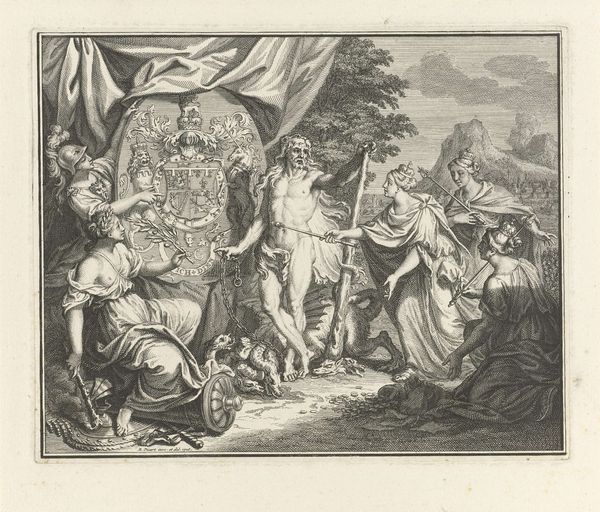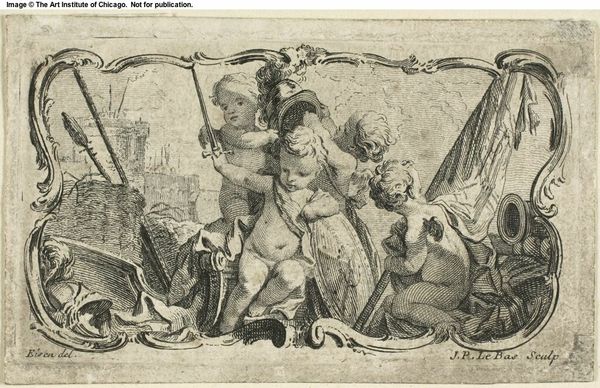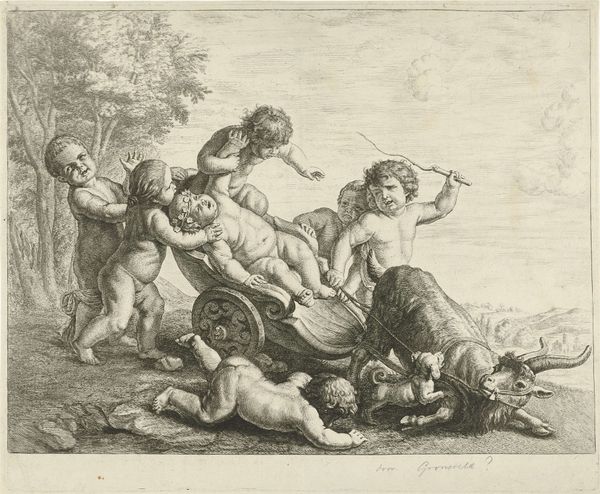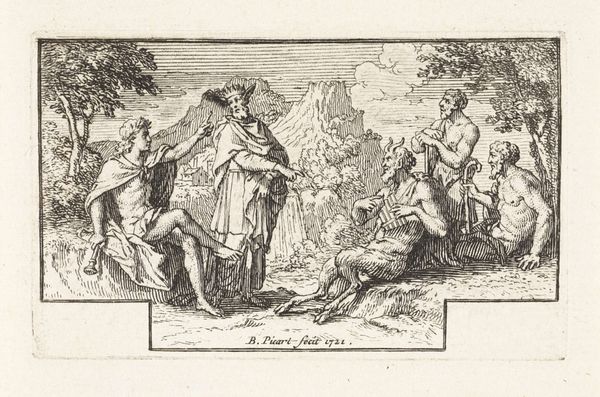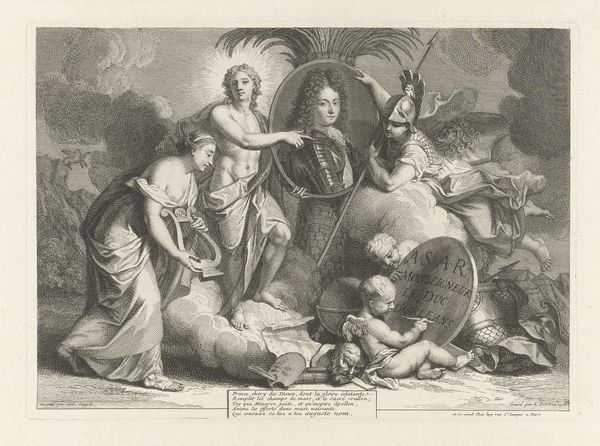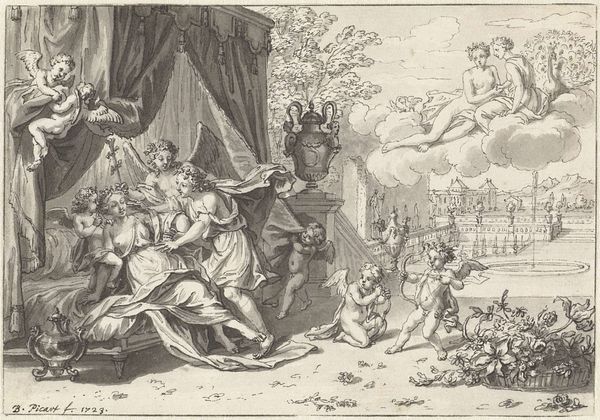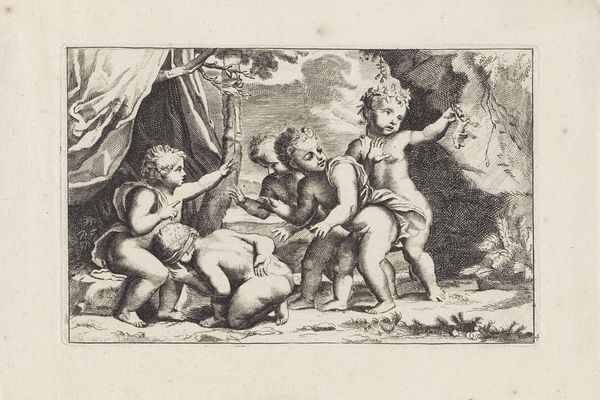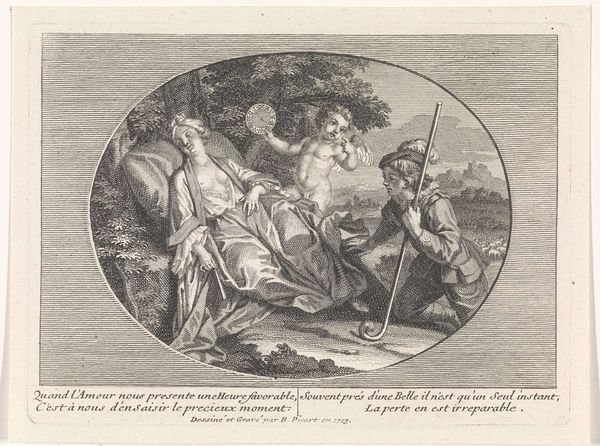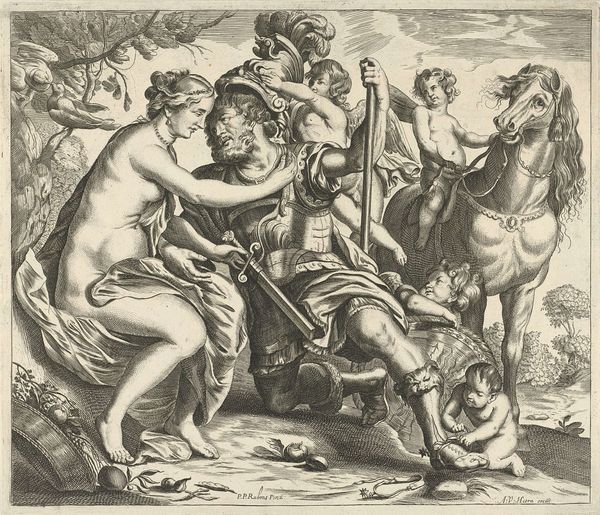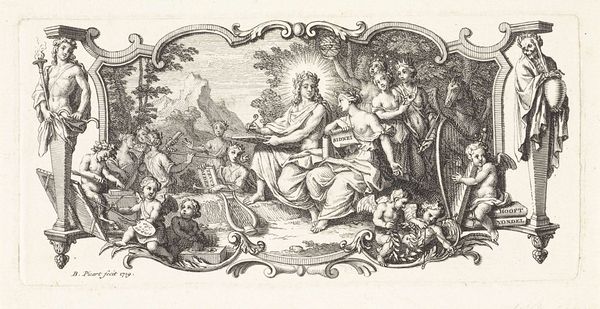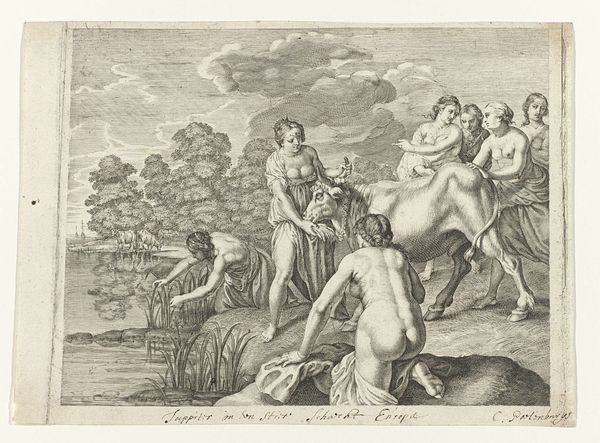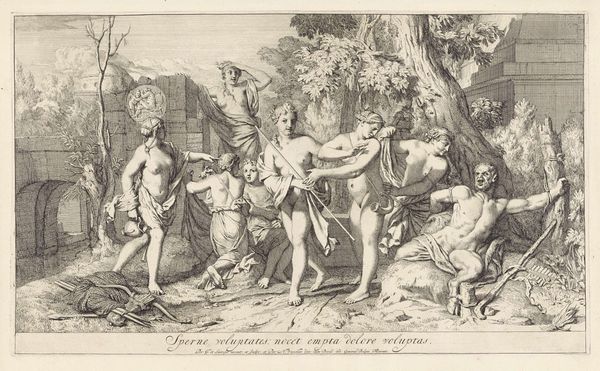
engraving
#
portrait
#
allegory
#
baroque
#
old engraving style
#
history-painting
#
decorative-art
#
engraving
Dimensions: height 87 mm, width 136 mm
Copyright: Rijks Museum: Open Domain
Simon Fokke created this print, “Three Putti with Helmeted Coat of Arms,” in 1748, a time when the Dutch Republic was navigating its identity through art and symbolism. The putti, or cherubic figures, are not just decorative; they represent innocence and divine approval, softening the martial imagery of helmets and weaponry. Fokke's choice to depict these figures suggests a cultural desire to temper displays of power with notions of purity and grace. The symbols of war and peace are brought together in a way that perhaps reflects the Netherlands’ complex relationship with its military and political power. The inclusion of books and laurel wreaths further adds to the image, alluding to knowledge, victory, and the classical world. By combining these different allegorical elements, Fokke speaks to the values of the Dutch Republic and the hope to reconcile these apparent opposites. These symbols invite us to think about how societies construct their identities through art, carefully balancing different facets of their character and aspirations.
Comments
No comments
Be the first to comment and join the conversation on the ultimate creative platform.
